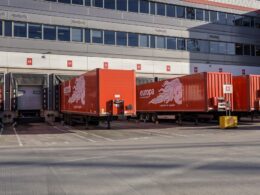If you want to run a tight logistics ship, you can’t let yourself get mired in habits and patterns! And to prove this claim, let’s check out the reasons to review your distribution network regularly.
Changing market dynamics
Changing market dynamics are one of the main reasons to review your distribution network. For example, accounting for the new warehouse automation trends is necessary. Customer preferences also shift, impacting distribution strategies. So, to remain competitive, distribution networks must align with evolving demands. Real-time tracking, faster deliveries, and personalized experiences are expected.
Consequently, a responsive distribution network becomes vital for enhanced customer satisfaction. Moreover, these shifts affect a whole host of your regular business operations. So, staying relevant means reviewing and optimizing distribution networks, a key to thriving amidst change.
Cost efficiency
Another good reason to review your distribution network is achieving cost efficiency. After all, inefficient distribution networks can lead to elevated transportation, warehousing, and operational expenses. So, optimizing these networks, including route planning and inventory management, presents an opportunity for substantial cost savings. By streamlining processes and eliminating inefficiencies, companies can allocate resources more effectively. Moreover, efficient distribution networks contribute to reduced lead times and quicker order fulfillment, positively impacting customer satisfaction. This proactive approach drives cost savings and enhances overall operational effectiveness, enabling businesses to remain agile and thrive in a dynamic business environment!
Global expansion
As businesses consider global expansion, distribution networks face new challenges. So, venturing into international markets demands careful consideration of cultural variations, regulatory requirements, and logistical intricacies. Adapting distribution strategies to these factors is pivotal for success! Moreover, each region’s unique characteristics must be factored in to ensure seamless operations. And navigating cross-border complexities necessitates efficient transportation, reliable customs clearance, and accurate documentation. By reviewing and optimizing distribution networks for global expansion, companies can effectively enhance their ability to penetrate new markets. This involves assessing potential partners, optimizing shipping routes, and implementing technology-driven solutions for smoother cross-border operations. Ultimately, a well-tailored distribution network that considers the nuances of each market can position businesses for successful international growth, bolstering their competitive advantage and enabling them to tap into new customer bases around the world.
Inventory management
Effective inventory management is pivotal for businesses striving for operational excellence. And properly aligned distribution networks aid in maintaining optimal inventory levels, preventing overstocking or stockouts. Moreover, balancing inventory with demand patterns through regular reviews allows for efficient resource allocation. So, by optimizing distribution strategies, companies can streamline their supply chain, reducing carrying costs and freeing up capital. Real-time data and analytics also play a significant role, enabling businesses to make informed decisions regarding stock replenishment and distribution priorities. An optimized inventory management system ensures products are available when needed, minimizing lead times and enhancing customer satisfaction! Technology-driven solutions like automation and predictive analytics also contribute to precise demand forecasting and efficient replenishment. In the ever-evolving business landscape, businesses prioritizing inventory management within their distribution networks gain a competitive edge, better positioning themselves to meet customer expectations while minimizing unnecessary costs.
Technological advancements
In the rapidly advancing landscape of technology, its impact on distribution networks is undeniable. With IoT, AI, and automation integration, operational transformation becomes evident. These innovations enhance visibility, traceability, and overall efficiency, optimizing resource allocation. We can see many examples in various industries, such as miraclemovers.com in the moving industry, that leveraging the newest tech can easily send you leagues ahead of your competitors! After all, such technological advancements enable real-time monitoring, predictive maintenance, and data-driven decision-making. So, companies embracing these solutions gain a competitive edge by offering faster deliveries, streamlined processes, and improved customer experiences. And the key to this lies in staying updated and adopting suitable technology that aligns with distribution strategies, ensuring sustainable growth and a robust position in the market.
Environmental sustainability
Environmental sustainability is paramount in the contemporary business ethos within distribution networks. The emphasis on eco-friendly practices is undeniable, with eco-conscious consumers seeking greener alternatives. So, as businesses evaluate distribution strategies, reducing carbon footprint emerges as a crucial objective. Optimized transportation routes and sustainable packaging choices play pivotal roles. Moreover, integrating renewable energy sources and minimizing waste further contribute to eco-efficiency. Industries across the spectrum, from fashion to electronics, recognize sustainability’s imperative. And as we witness this shift, distribution networks can pave the way for positive environmental impacts. However, this requires that you regularly review your distribution network and account for each new demand and trend in this field.
Risk management
In the realm of distribution networks, effective risk management is pivotal. Businesses must anticipate potential disruptions, such as, for example, dealing with the logistics of the next pandemic. So, companies can mitigate the impact of unforeseen events by identifying vulnerabilities and creating robust contingency plans. Moreover, proactive risk assessment allows for swift responses, maintaining customer satisfaction, and minimizing financial losses. Through continuous evaluation and adaptation, businesses can fortify their distribution strategies, ensuring operational continuity in the face of uncertainty!
Data-driven insights
In the era of data-driven decision-making, distribution networks must make use of the insights obtained from analytics. After all, data analytics offers deep visibility into network performance, guiding informed choices. From route optimization to demand forecasting, data-driven insights enhance efficiency. This empowers businesses to align distribution strategies with real-time trends and customer preferences! Such insights also allow proactive adjustments, minimizing disruptions and improving resource allocation. And the technology empowers timely decision-making, contributing to streamlined operations. So, data-driven distribution networks enhance agility, responsiveness, and overall performance, positioning companies for success in an increasingly competitive landscape.
Competitive advantage
For the sake of profits, achieving a competitive advantage is paramount for businesses. And to improve your logistics, optimizing distribution strategies is key. An efficient network minimizes costs, reduces lead times, and enhances customer satisfaction. So, streamlined operations lead to quicker deliveries, reduced stockouts, and better inventory management. This advantage enables businesses to respond swiftly to market changes and outpace competitors!
Furthermore, a well-designed distribution network fosters brand loyalty and positive customer experiences. And as consumer expectations evolve, staying ahead necessitates constant reviews and adaptations. A well-structured distribution network ready for change elevates operational efficiency and positions businesses for long-term growth and success in a competitive landscape!
Working to review your distribution network
You can make serious improvements if you can leverage the reasons to review your distribution network! On the other hand, allowing your distribution network to remain static will only make your business fall behind competitors.













